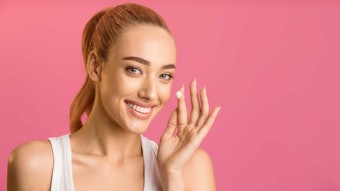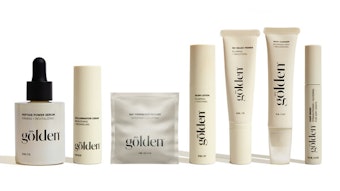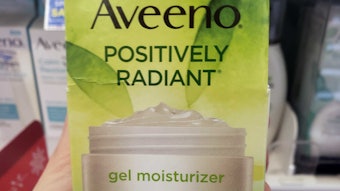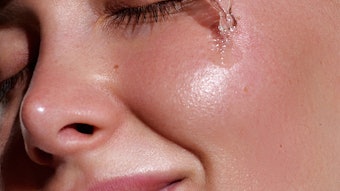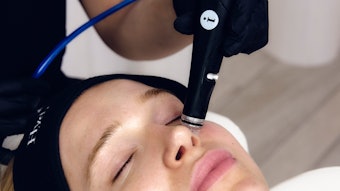
Silicone scar tape was trending on TikTok in mid-November 2023, about a week before this was written, with videos about it gathering some 3.9 million views.1 It was reported to be part of a larger #medicaltok trend, whereby users were getting at-home medical care tips and advice from TikTok. Similarly, videos with the hashtag #medicaltiktok earned more than 5 million views; in fact, in December 2022, Forbes reported that 33% of Gen Z-ers trusted TikTok more than doctors.2
Log in to view the full article
Silicone scar tape was trending on TikTok in mid-November 2023, about a week before this was written, with videos about it gathering some 3.9 million views.1 It was reported to be part of a larger #medicaltok trend, whereby users were getting at-home medical care tips and advice from TikTok. Similarly, videos with the hashtag #medicaltiktok earned more than 5 million views; in fact, in December 2022, Forbes reported that 33% of Gen Z-ers trusted TikTok more than doctors.2
With saturation like this on a platform geared toward entertainment, it’s clearer than ever that consumers are focused on health and wellness. We’ve all read reports saying the pandemic accelerated a pre-existing trend toward wellness and self-care. This easily translated into personal care, reinforcing the demand for natural products. The pandemic also sharpened scrutiny over feared cosmetic ingredients since safety, of course, became a top concern – spilling over into clean beauty.
Add to this the frequent hand sanitizing and cleansing, which eroded consumers’ barriers in a market where reports of sensitive skin were already climbing. Consumers’ heightened concerns over microbes, bacteria and viruses merged with talk surrounding the skin microbiome and potentially negative impact of dysbiosis.
Then there is the impact of stress from it all, weakening the mental and physical state of consumers, their hair and skin, and setting the tone for trends in psychodermatology and anti-stress cosmetics. It’s no wonder why we’re seeing health- and wellness-related claims emerging across product categories.
Related to this, we asked several industry experts to share their views on current and future trends for skin health-related products. Following are their insights.
Holistic Wellness and Skin-replenishing Cleansers
Pooja Vaidya, head of application development for personal care at Galaxy Surfactants, Ltd., sees a shift in skin care as consumers prioritize effectiveness and functionality. “…[A] minimalist approach to appearance subtly denotes class and social status [and] places emphasis on ingredient quality, proven efficacy and the reassurance of simplicity,” Vaidya writes, adding that the market has surpassed mere beauty or temporary efficacy and now seeks eco-friendly and holistic skin health.
Moving forward, Vaidya believes the industry will continue toward holistic wellness, combining skin health and performance – with honest and transparent validation. “Brands that are honest with their efficacy will stand out,” Vaidya explains.
Additional directions, per Vaidya, include ongoing demand for naturals, minimalization and customized care. “Multifunctional ‘less but better’ concepts can command a higher price by emphasizing how efficacy has not been compromised,” Vaidya writes. “…[Also], custom solutions combined with skin health will give consumers a sense of personalized skin care. This will rise with the growth in custom simplicity.”
Enabling these trends, Vaidya points to naturals obtained through eco-friendly processes, such Galaxy Surfactants’ Galsoft GLI 21 (INCI: Disodium Cocoyl Glutamate (and) Sodium Cocoyl Isethionate), a gentle foaming agent exhibiting exceptional performance on the skin. Skin-replenishing cleansers, e.g., Galsoft TiLS(G) (INCI: Polyglyceryl-3 Oleate (and) Lauroyl Sarcosine (and) Triisopropanolamine (and) Glyceryl Laurate (and) Tocopherol), will also provide easy maintenance, particularly for sensitive skin.
For sustainability goals, Vaidya sees waterless formats such as cleansing capsules emerging. Finally, the expansion of amino acid technologies like Galguard LipoG (INCI: Capryloyl Glycine (and) Undecylenoyl Glycine) is ongoing. This nature-derived anti-dandruff and anti-acne agent is said to impart desired effects without damaging skin.
Doctor Brands and Health Through Care and Protection
Laurie Canel’s view, as product marketing leader for personal care actives at Gattefossé, concurs with Vaidya’s. “In recent years, we have seen a real shift from skin care to skin health care,” Canel writes. “Consumers are more than ever conscious of harsh factors surrounding their skin (e.g., pollution, UV, artificial visible light, stress, bad dietary habits …) and this has even been exacerbated with the pandemic.”
For Canel, this translates to skin care as consumers are drawn to health-centric products. “Preventative approaches to beauty and skin care (for example, using SPF), interest for dermatologically tested products, preference for pharmacy brands … are clear signs accompanying this movement.” Canel adds that in such a context, the dermocosmetics segment and so-called doctor brands or derma brands and clinical brands are recording increasing popularity and sales performance. … “[T]his attraction for dermocosmetics is particularly true for millennials, whose motivations are mainly driven by the search of balanced-and-healthy-skin-through-care-and-protection claims.”
Supporting the drive for healthy skin is Gattefossé’s active ingredient, Solastemis (INCI: Fructose (and) Glycerin (and) Water (Aqua) (and) Sechium Edule Fruit Extract). Per Canel, this plant-based innovation targets photoaging and responds to growing needs for healthy skin.
“It acts at the heart of epidermis mechanics by protecting the DNA of keratinocytes from lesions induced by UVA radiation and by boosting endogenous DNA repair capacity. Doing so, it preserves the stem cells of the epidermis, ensuring proper homeostasis for the skin’s first line of defense,” Canel explains. In doing so, the ingredient visibly corrects photoaging-associated symptoms in skin. A clinical study showed that, versus a placebo, the ingredient significantly improved wrinkles and the skin’s microrelief. The complexion also appeared brighter, more even and healthier.
Upcycling and Holistic Self-care
Asdjad Aboudou, product manager for health and beauty at Robertet, sees sustainability and holistic self-care at the top of beauty consumers’ minds. “Consumers are increasingly focusing on sustainability in all aspects of their lives, and personal care products are no exception,” Aboudou writes. “They are waiting for brands not only to formulate their products with natural ingredients, but also to assess their manufacturing processes, supply chain and carbon footprint.” For example, Robertet has committed to sustainable and responsible sourcing, repurposing plant-based raw material waste into innovative materials, per Aboudou.
“Well-being has become consumers’ top priority,” Aboudou adds. “To address their needs in terms of mental health, physical well-being and beauty, they are looking for new products and technologies.” In relation, Robertet developed “in and out” skin and hair ingredients with clinically proven efficacy that can elevate consumers’ beauty routines. The company also developed solutions for emotional well-being and sensory beauty.
“Given the global economic and environmental context, sustainability should be the number one market criterion and will drive innovation,” Aboudou writes. “Efficacy is another big consumer demand and plays a crucial role in their purchase paths. As consumers want to treat their body as their face, ingredients are becoming a major factor. Natural and organic ingredients are the way to go.”
Aboudou emphasizes that natural resources are, of course, not unlimited. “To meet high demand for natural ingredients, upcycling, vertical farming and biotechnologies are good examples to develop innovative and sustainable ingredients. We are currently focused on upcycled ingredients but [we’re taking] a closer look at other solutions.”
Biology-boosted Essentials and Personalized Care
“The skin care market is undergoing a shift influenced by the trend in cosmetics favoring a return to fundamentals while embracing a modern biological perspective,” Òscar Expósito, CEO, CSO and co-founder of Vytrus Biotech observes. “Consumers are now in pursuit of essential products infused with cutting-edge cosmetic science for heightened beauty results, all while prioritizing transparency in sourcing information.” Regarding the latter, Expósito underscores how digital platforms play a crucial role in amplifying consumer awareness, elevating the importance of making informed choices in skin care routines.
“The future of the skin care market holds a strong focus on [personalization], leveraging advancements in science and biotechnology,” Expósito writes. “The market is poised to offer essential multifunctional products, simplifying skin care routines in response to the ‘back to the essentials’ trend of 2024.” Expósito adds that the recent surge in science-based solutions, particularly those targeting cell senescence, suggest a promising avenue for delaying the aging process and meeting consumer demands for effective, clinically proven skin care.
“Technological advancements drive a deliberate shift toward personalized and scientifically supported skin care,” Expósito continues. “Key technologies, notably biotechnology and ingredients like peptides, play vital roles, tailoring solutions to specific skin concerns. Peptides, mimicking natural elements, address issues [ranging] from repair to reversing cell senescence.”
Finally, Expósito explains Vytrus uses plant peptides from stem cells with growth factor-like activity to fight cellular senescence and reverse skin aging. “While cells naturally age, actives like Centella asiatica peptides are clinically proven to delay the senescence of skin cells,” Expósito writes. Vytrus leverages this with its Centella Reversa (INCI: Centella Asiatica Leaf Extract) ingredient, said to improve the signs of skin aging through targeted cellular rejuvenation.
References
1. Cosmetics & Toiletries. (2023, Nov 15). Trending: Hunca Kozmetik, Steya, kojic acid soap and others. Available at https://www.cosmeticsandtoiletries.com/research/consumers-market/news/22879361/trending-hunca-kozmetik-steya-kojic-acid-soap-and-others
2. Gordon, D. (2022, Dec 20). 33% of gen zers trust TikTok more than doctors, new survey shows. Forbes. Available at https://www.forbes.com/sites/debgordon/2022/12/20/33-of-gen-zers-trust-tiktok-more-than-doctors-new-survey-shows/?sh=4016cc976c7b




